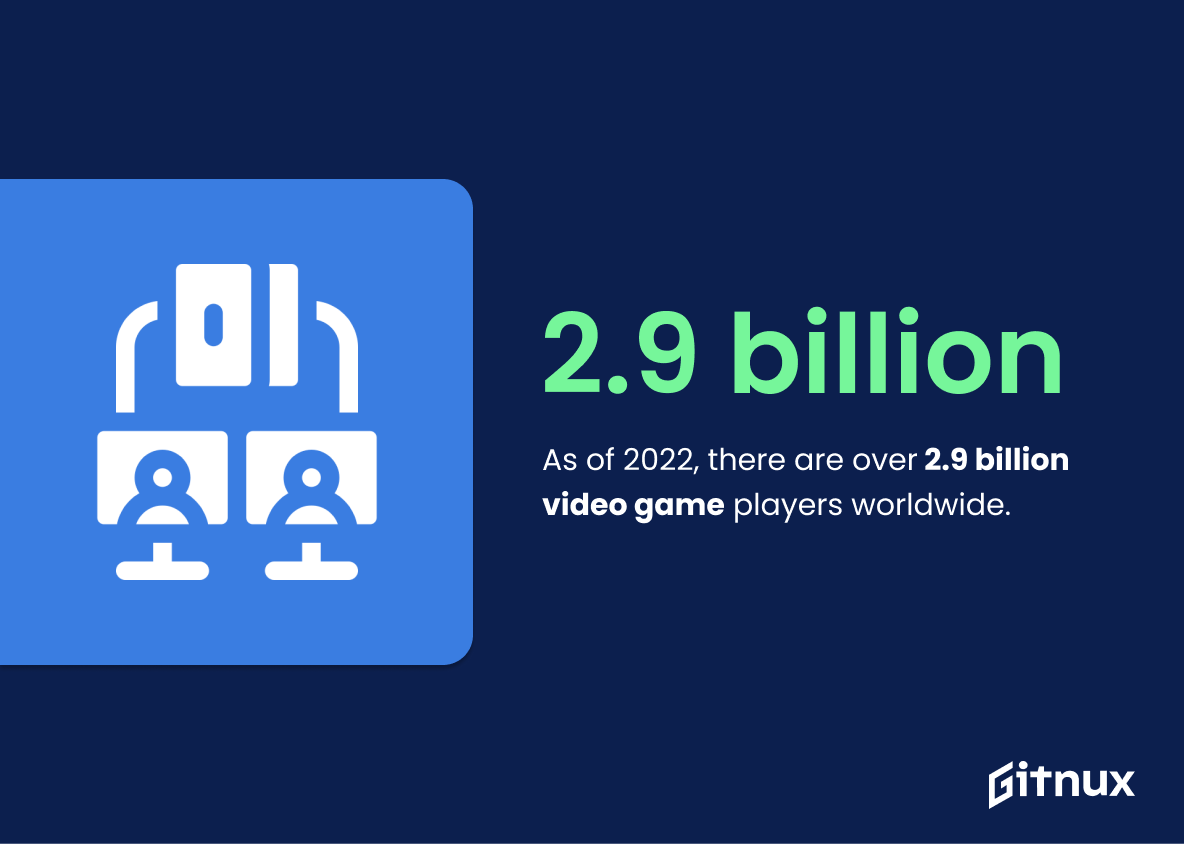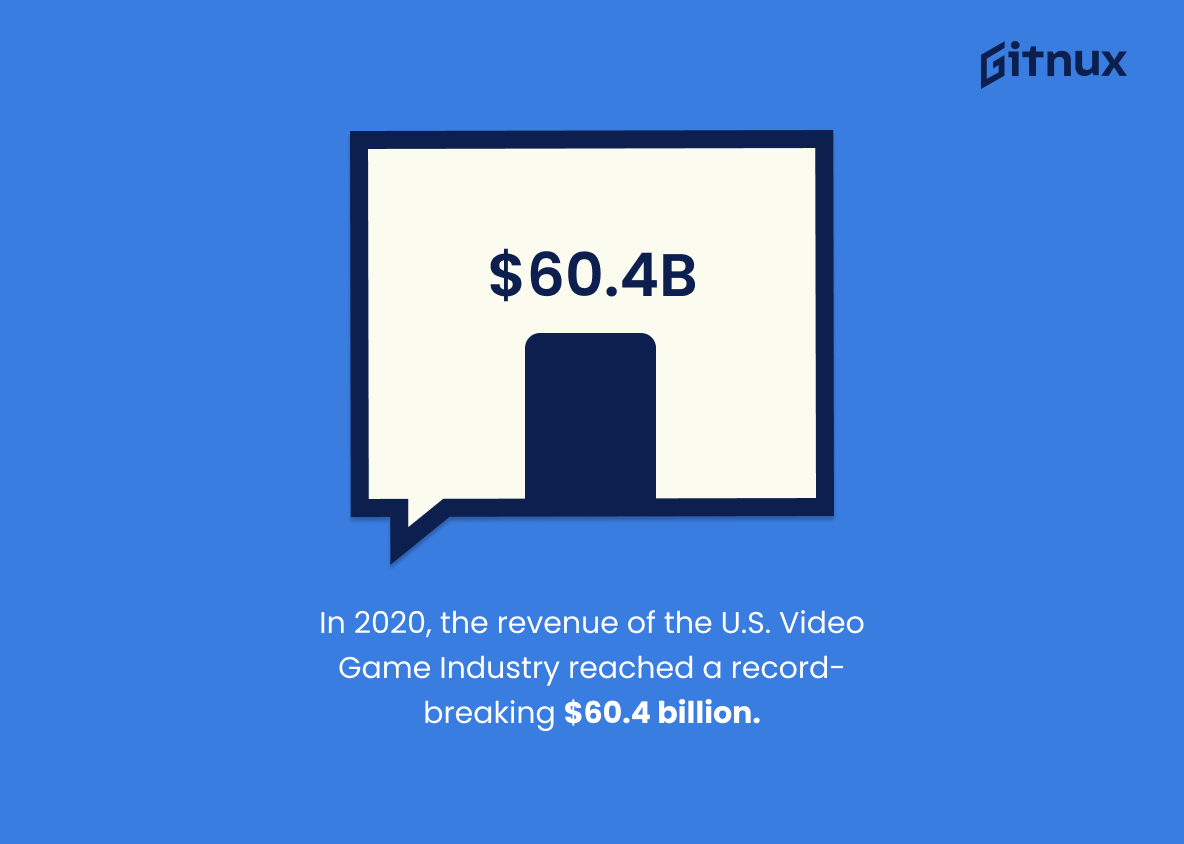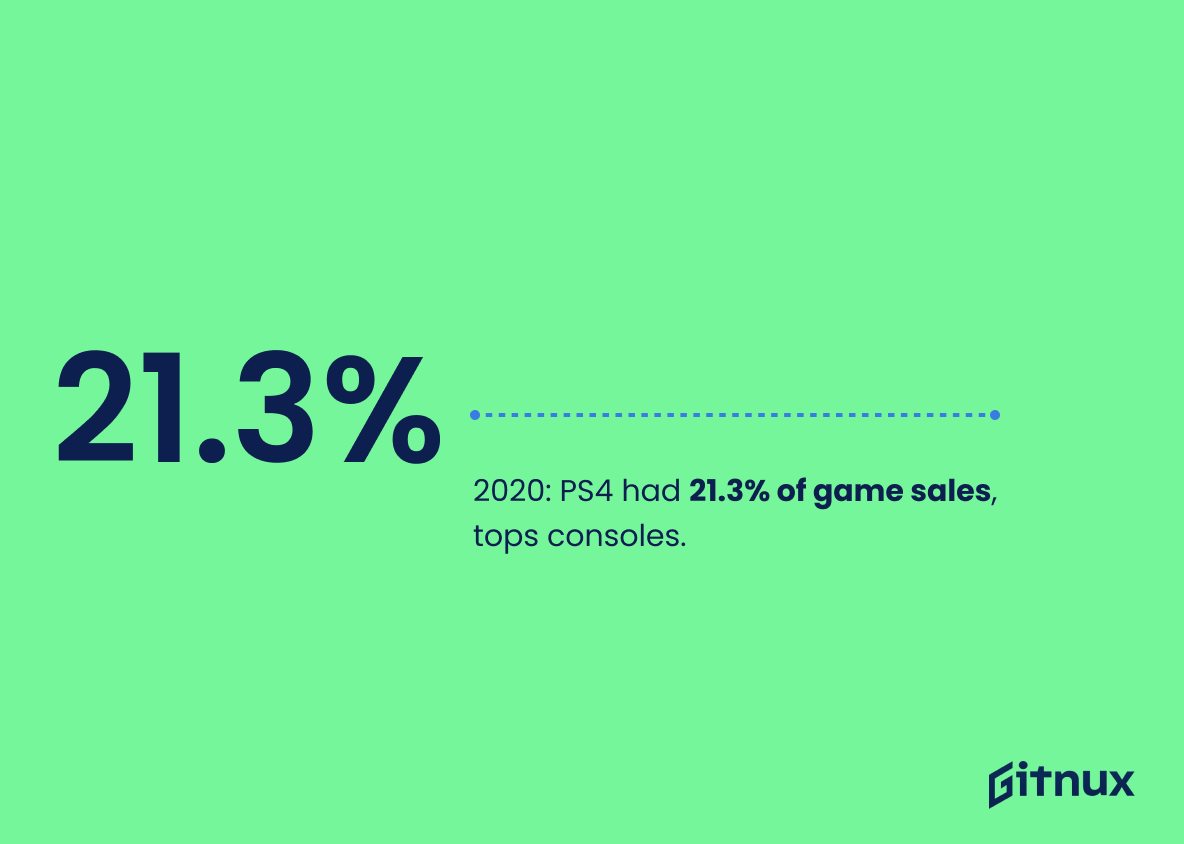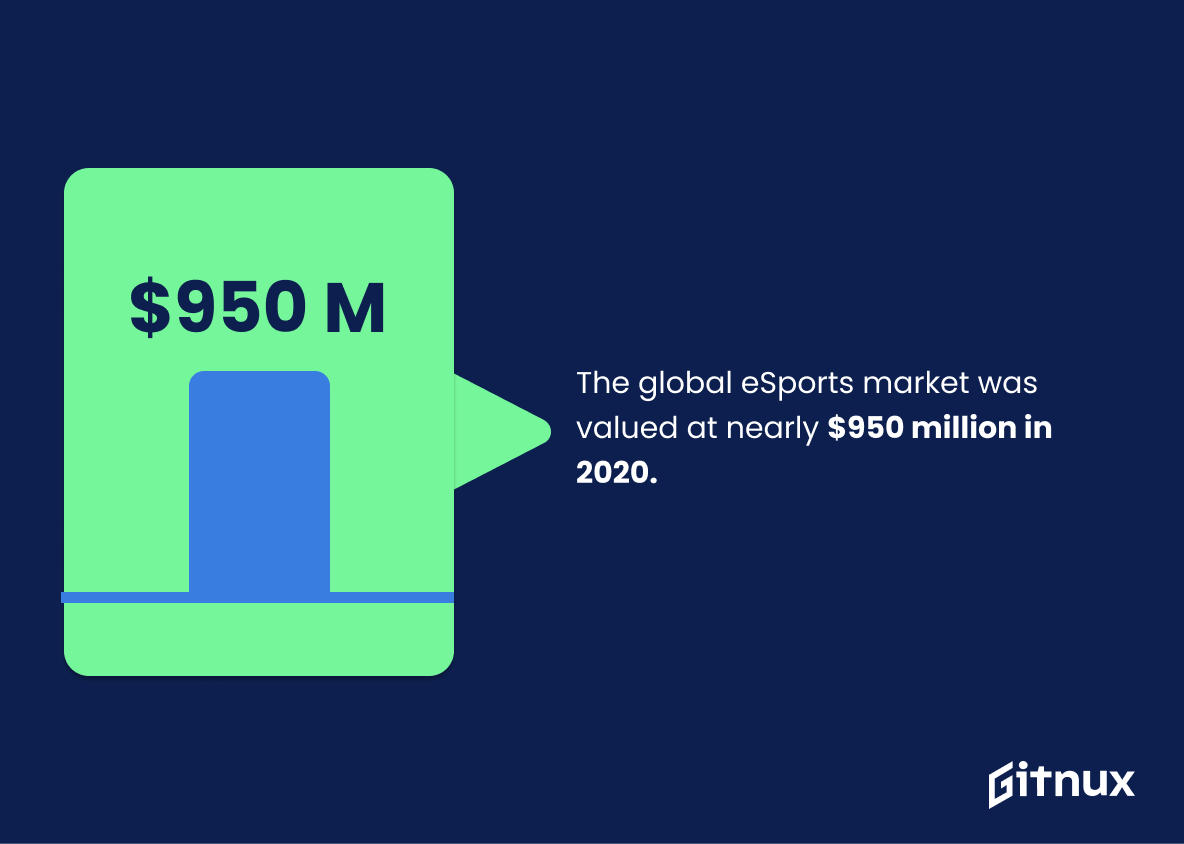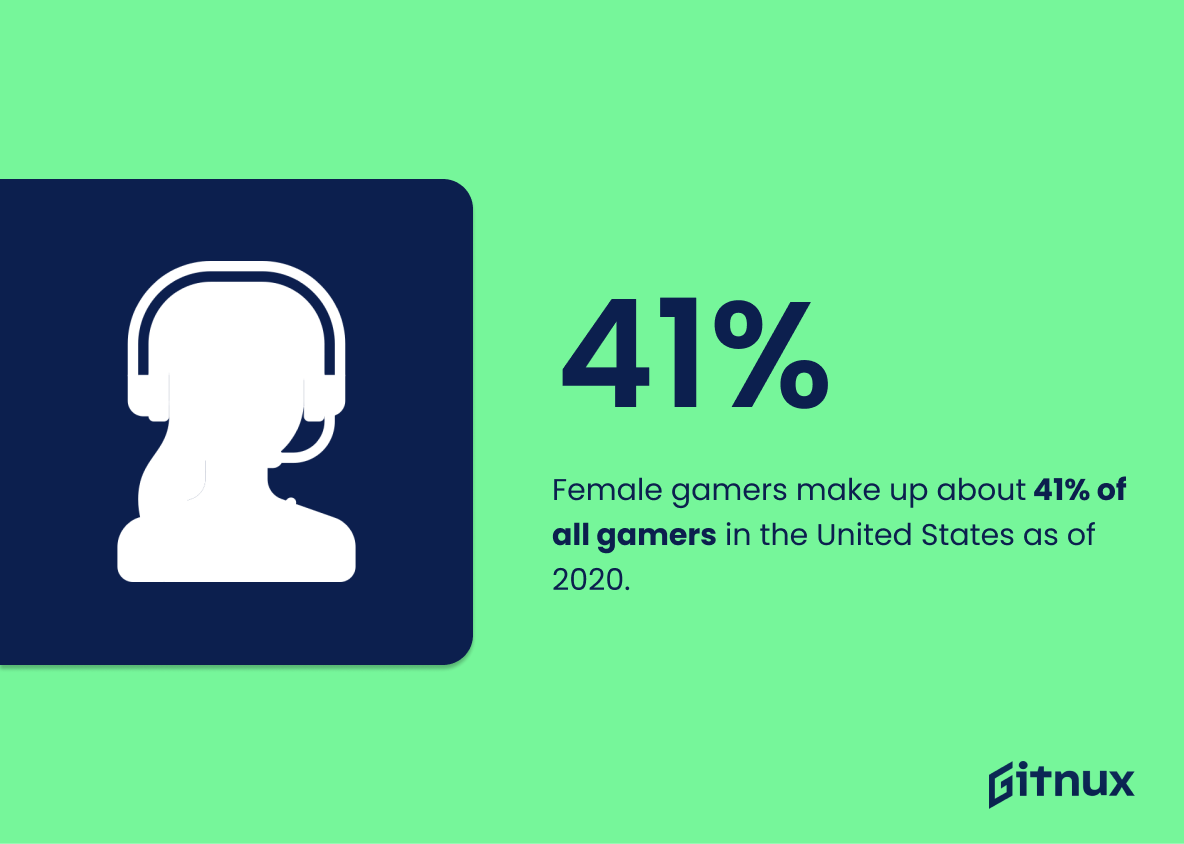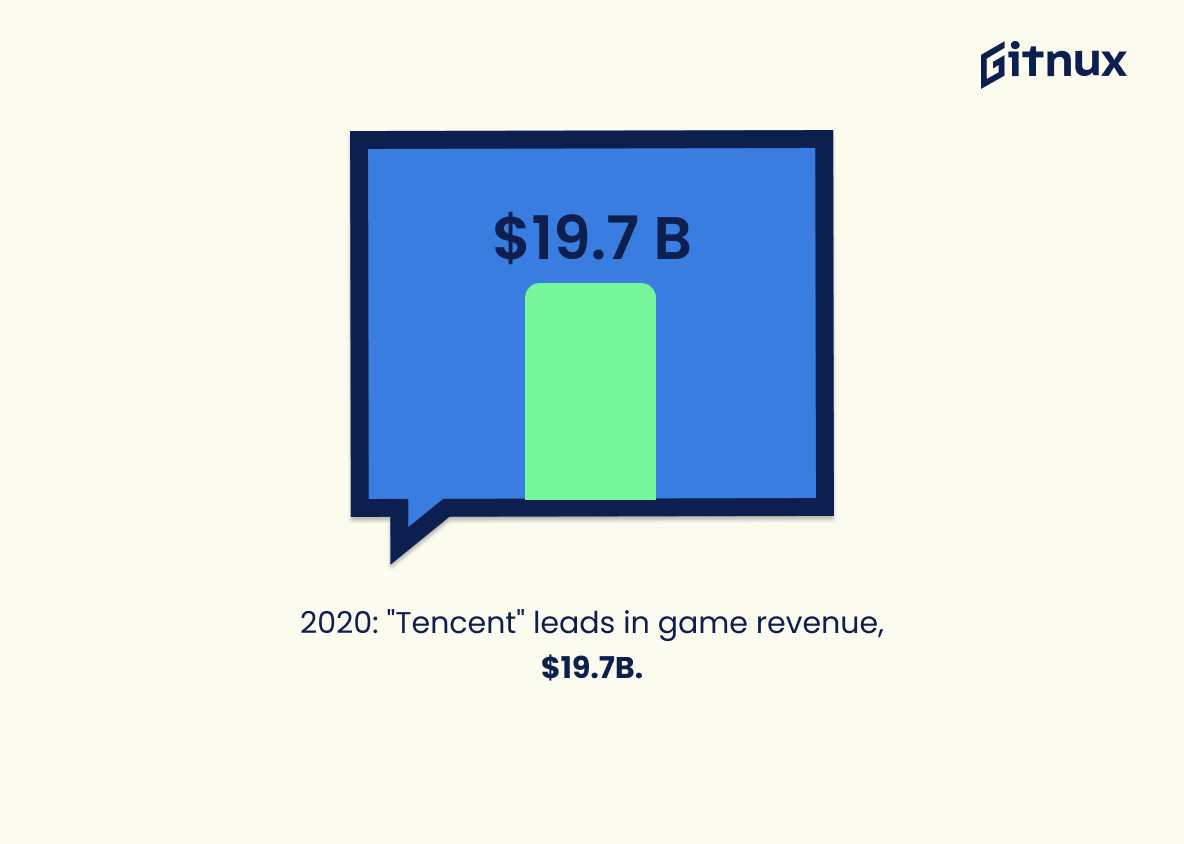Step into the captivating world of gaming, where reality merges with imagination and innovation fuels thrills. As we immerse ourselves in this digital playground, we awaken a surge of curiosity about the dynamics driving this industry. In this blog post, we dive into the intricate world of video game statistics, dissecting the figures and trends that shed light on the global fascination with gaming.
Whether you’re a casual gamer intrigued by the industry’s remarkable growth, a seasoned developer looking for market insights, or simply a numbers enthusiast, these statistics will deliver an exciting insight into how this colorful, interactive universe is continuously evolving.
The Latest Video Game Statistics Unveiled
As of 2022, there are over 2.9 billion video game players worldwide.
Imagine venturing into a bustling global metropolis, teeming with varied cultures, passions, and mindsets, all harmoniously engaged in the same activity. This is the landscape of video gaming, highlighted by the astounding figure of over 2.9 billion players worldwide in 2022. By understanding the sheer vastness of this digital universe, the potential reach of a game or platform can truly be grasped. It signals a dynamic realm of endless possibilities, opening avenues for educational, commercial, and technological advancements.
The lure of this thriving community extends beyond merely entertainment, indicating economic potency and invaluable insight into consumer behavior. Hence, this statistic is truly a compass guiding the navigation through the intricate world of video gaming in a blog post about Video Game Statistics. It’s not just a number – it’s a reflection of a cultural phenomenon weaving billions into a shared tapestry of immersive experiences.
In 2020, the revenue of the U.S. Video Game Industry reached a record-breaking $60.4 billion.
Peering into the crystal ball of data, 2020 proclaimed a prodigious triumph for the gaming industry and an auspicious future for gamers. Attaining a monumental peak, the U.S. Video Game Industry garnered a jaw-dropping $60.4 billion in revenue. Unraveling these monetary threads within the tapestry of video game statistics, we find a testament to the industry’s growth, vigor, and potential.
Highlighting such record-breaking figures paints a compelling picture of an entertainment powerhouse and a magnet for investors. Furthermore, it underscores the influence, popularity, and expansive reach of video games in the contemporary digital age. In the game of numbers, this statistic is a remarkable player, shaping an intriguing narrative about the future of digital entertainment.
Approximately 21.3% of video game sales were for the PS4 in 2020, the highest among video game consoles.
Highlighting the significance of this figure, delving into the realm of video game statistics, it illustrates the dominance of PS4 in the gaming marketplace in 2020. This share of 21.3% is a depiction of the console’s popularity among gaming enthusiasts, showing gaming trends and preferences for consoles.
This percentage also offers insights into the nature and state of competition between different console brands. It’s a barometer of consumer choice and portal into the prowess of PS4’s strategy in captivating gamers, thereby making it an integral piece of the larger puzzle in understanding gaming statistics and industry tendencies.
About 34% of video game players in the U.S. were aged between 18-34 in 2021.
Delving into the demographics of video game players in the U.S., one uncovers the captivating trend that adult players, specifically those in the age bracket 18-34, represent approximately 34% of the gaming community in 2021. In the realm of video game statistics, this insight is a critical piece of the jigsaw puzzle. It provides enlightening context and substance to discussions surrounding market segmentation and targeted engagement strategies.
Additionally, it emphasizes a shift away from the stereotypical image of the teen gamer, illuminating the true diversification of gaming’s appeal. This, in turn, can shape dialogues on the development of age-appropriate content, marketing strategies and the economic impact of the gaming industry. Ultimately, a blog post armed with this detail can deliver a more compelling and comprehensive analysis of the video game landscape.
Around 38% of global EA Sports FIFA players are from North America as of 2021.
The allure of the video gaming world is indeed far-reaching, captivating various cultures and demographics across the globe. Yet, our focus narrows down to the vibrant continent of North America, capturing the interest of approximately 38% of all EA Sports FIFA players globally in 2021. This figure, astonishing and noteworthy as it may be, offers a striking revelation of North America’s role within the global gaming landscape.
Its emphasis provides an overarching viewpoint of how sports simulation games, like EA Sports FIFA, have managed to score a formidable presence among North American gamers. This compelling proportion underscores a realm where virtual and actual sports entwine, unraveling an inherent fascination for soccer, FIFA’s centerpiece, within the North American populace.
Moreover, the game developer’s potential for tailoring experiences and value propositions towards this substantial audience becomes palpable. It’s akin to unmasking a hidden treasure chest brimming with opportunities for growth, expansion, and a deeper understanding of user preferences unique to this region.
This figure also directs undercurrents of a shift in consumer behavior and gaming patterns, reflecting the undeniable force that sports video games wield in shaping the industry’s future trends. Consequently, illuminating the pathway for stakeholders, market analysts, and gaming aficionados alike in their quest to grasp the evolving dynamics of the global gaming industry.
Video game sales in the U.S. surged by 27% in 2020, the highest growth rate since 2010.
Drawing attention to the exceptional rise in video game sales in the U.S. in 2020, which soared by an impressive 27% – a growth rate unseen in a decade – illuminates the increasing prominence of the gaming industry amidst the entertainment sector. Not only does it reflect consumer behavior trends, it also spotlights the evolving role of gaming in everyday life.
This striking surge could be attributed to multiple factors, potentially ranging from technological advancements, increased accessibility, or even shifts in societal behavior due to factors such as lockdown measures in 2020. Therefore, this data paints a vibrant picture of the dynamic landscape of the gaming world and sets a benchmark for coming years, making it invaluable for strategizing future developments in gaming and comprehending market trends in the broader technology and entertainment industries.
Approximately 70% of parents in the U.S. believe video games positively impact their child’s life, according to a 2019 survey.
In painting a clear canvas of the landscape of video games in our society, the statistic in focus offers quite a vibrant splash of color. At its heart, it manifests the intriguing perspective that approximately 70% of U.S. parents perceive video games as a positive influence in their child’s life, as recorded in a 2019 survey. This data fuels a fascinating dichotomy between conventional wisdom and emergent attitudes, setting a tone for the ongoing discourse in the blog post.
As we explore video game statistics, this piece of data threads the narrative of a shifting societal mindset about video gaming. It lays the groundwork for an audience to ponder the potential benefits of video games, rather than solely focusing on negative implications. This statistic is like a key turning in a lock, opening up avenues of discussion around the educational, cognitive, and social benefits that have started to reshape parent’s perceptions around video gaming.
More than 50% of U.S. adults played video games during the COVID-19 pandemic in 2020.
Delving into this enticing piece of data, we find that over half of U.S. adults sought refuge in the digital realms of video games amidst the chaos of the COVID-19 pandemic in 2020. This impressive statistic does more than just underscore the popularity of gaming. It illustrates how the pandemic birthed a surge in video game usage.
Standing with one foot in the world of pandemic-driven uncertainty and the other in a domain with digital dragons and mystical landscapes, U.S. adults evidently saw video gaming as a suitable medium for recreation and escape. In the darkest parts of 2020, this statistic spotlights the significant societal shift towards virtual entertainment, and hints at the potential growth of this industry in both the immediate and distant futures.
In tandem with other video game stats, this landmark figure could be the key to unlock a deeper understanding of the psychology of adults under stress, the evolving dynamics of the entertainment market, and most importantly, the latent potential of the video game industry. Insurance companies, mental health advocates, and business investors alike can glean insights from this extent of video gaming engagement, making for a tantalizing starting point for your blog about Video Game Statistics.
The global eSports market was valued at nearly $950 million in 2020.
Peeling back the layers of the gaming world, one might stumble upon a golden cache: the fact that the global eSports market was valued at nearly $950 million in 2020. This gem brings the enormity of the video game industry into perspective, reflecting a powerful trend and dimension that unites millions of players globally. The impressive valuation is not just a symbol of engagement, it also illuminates the massive economic impact and the immense potential of this digitally orchestrated competition.
It underscores the argument that video games aren’t just a hobby or a niche market anymore. They have transformed into a vast and thriving landscape of opportunity. Thus, the evolution of video gaming is not just a tale of advancing technology, but also one of significant monetary growth.
The game “Among Us” was the most downloaded mobile game worldwide in 2020 with approximately 264 million downloads.
A captivating revelation in the realm of Video Game Statistics has been the commanding ascension of the game “Among Us” to the pinnacle in 2020. Its title as the most downloaded mobile game worldwide, credited with an astonishing estimate of 264 million downloads, is a testament to its global appeal and engaging format.
This statistic weaves a captivating narrative into our blog that underscores the evolving trends in the global gaming industry, the surge of mobile gaming, and the potential impact of social games in fostering virtual interactions amidst enforced physical distancing under pandemic constraints. Furthermore, it adds a vital dimension to our discussion by hinting at insightful correlations between download rates, player engagement, and the successful elements in game design.
Female gamers make up about 41% of all gamers in the United States as of 2020.
Unveiling the diversity in the gaming realm, the figure revealing that approximately 41% of all U.S gamers are female as of 2020 paints a vivid picture of the growing gender balance in the industry. Not so long ago, the dominion of gaming was often stereotyped as predominantly male territory. An exploration into this revelation, therefore, uncovers the seismic shift that has occurred in the recent years – bridging the gender gap while redefining the old gaming norms. This figure represents more than a rising ratio, it signals an evolution in societal norms and trends, also indicating potential business strategies for companies eyeing the gaming market.
In essence, this numeric representation challenges misconceptions and sets a groundbreaking path for inclusivity and equality in the sphere of gaming. With a broadened customer base, manufacturers and marketers have a terrain rich with opportunities to design and launch products that cater to a wider and more diverse audience. Moreover, it brings attention to the altering dynamics of consumption patterns enriching the discourse around video game statistics.
As of 2020, “Tencent” is the leading public video game company based on game revenue generating over 19.7 billion U.S. dollars.
Highlighting Tencent’s towering stature, the 2020 figure of 19.7 billion U.S. dollars in game revenue is an eye-popping exemplification of the indomitable growth and potential scope within the video gaming industry. Serving as a powerful testament to the globally expanding appeal of gaming, Tencent’s success story illuminates the fusion of entertainment and technology in a captivating manner.
In a blog post about Video Game Statistics, such a striking data point sparks intrigue by painting a vivid picture of scale — realizing the gargantuan market size and potential profitability that video game companies can achieve. Moreover, it spotlights global trends by showing the vital role major players, such as Tencent, can assert on world stages, forging new pathways and possibilities in the gaming landscape.
Conclusion
The world of video games is vast and constantly evolving, marked by significant growth year after year. The statistics on gaming clearly underline its increasing popularity and diverse user base. Whether it’s the staggering amount of time spent on gaming, the booming eSports industry, the impressive revenues or the wide age range of gamers, every number tells a story of a dynamic industry that is only set to grow even further.
Gaming, it appears, is not just a pastime but an industry that directly and indirectly affects — and is affected by — numerous aspects of societal behavior, technology, and economy. As engagement statistics continue to rise, it’s clear that video games will remain a prominent part of our digital lives. This does not just signal opportunities for developers but also for advertisers, investors, and educators who can leverage the power of this engaging industry.
References
0. – https://www.www.statista.com
1. – https://www.www.nielsen.com
2. – https://www.www.npd.com
3. – https://www.www.esrb.org
